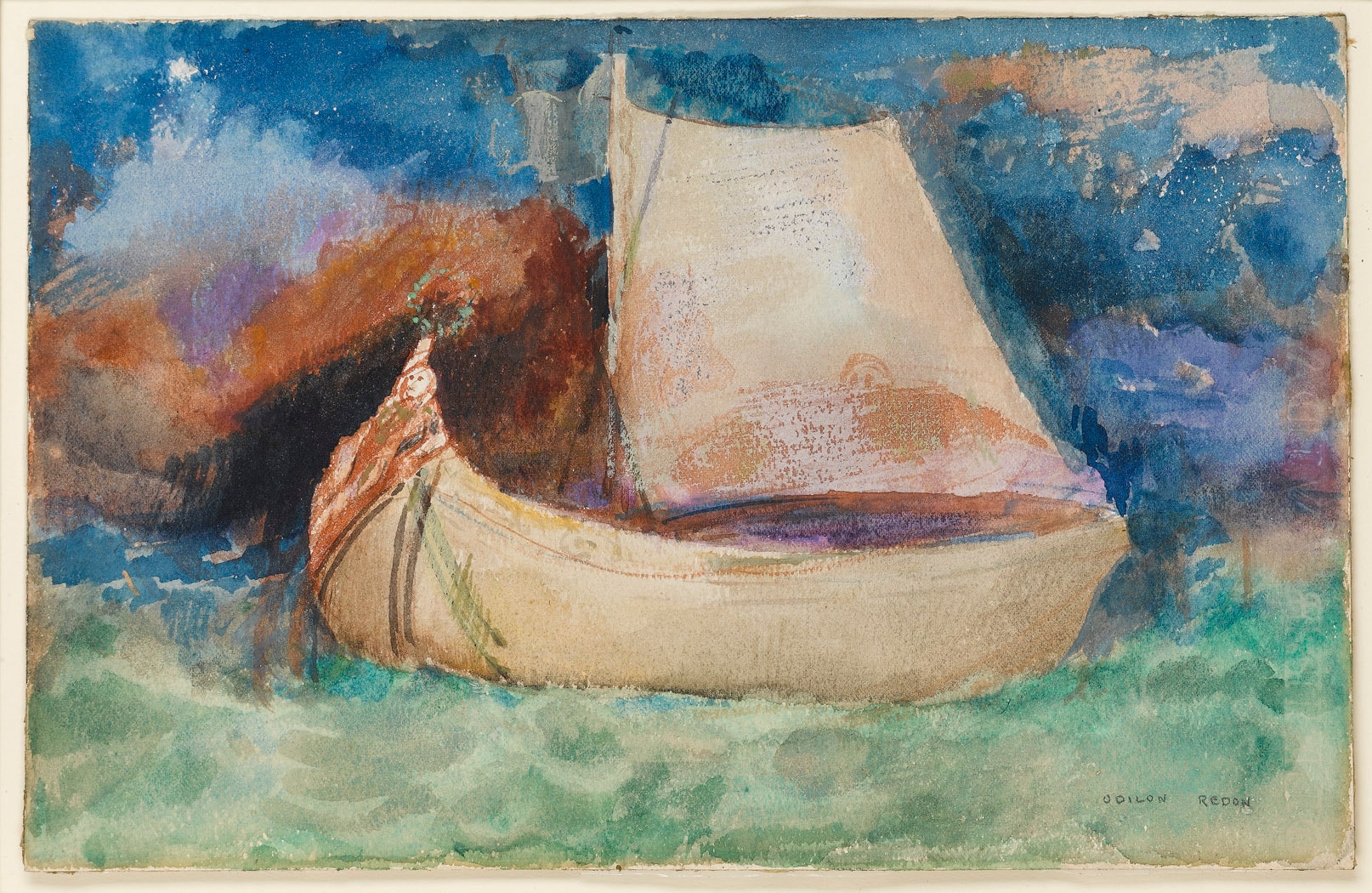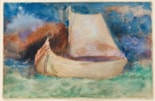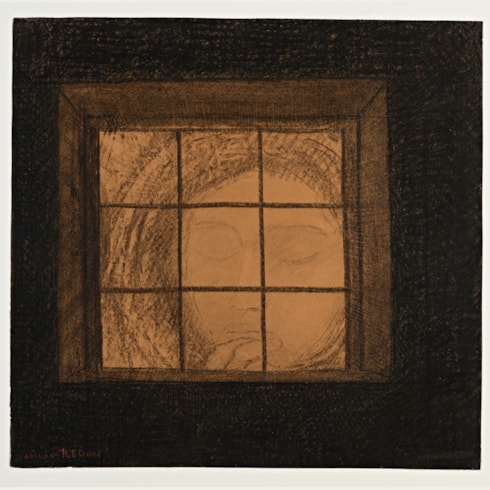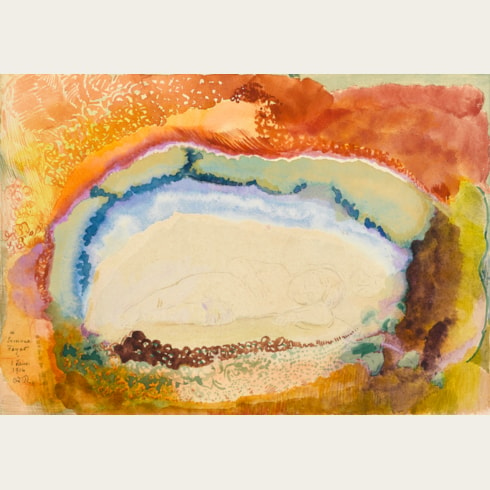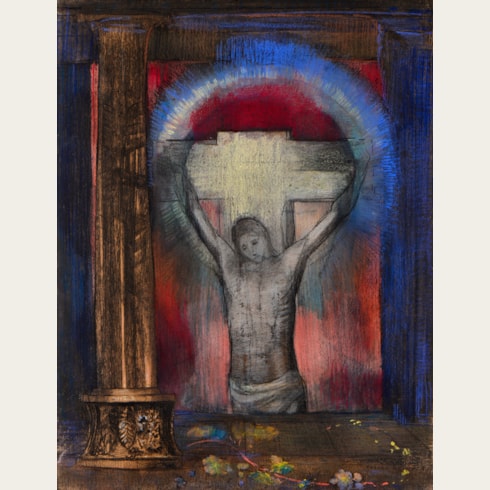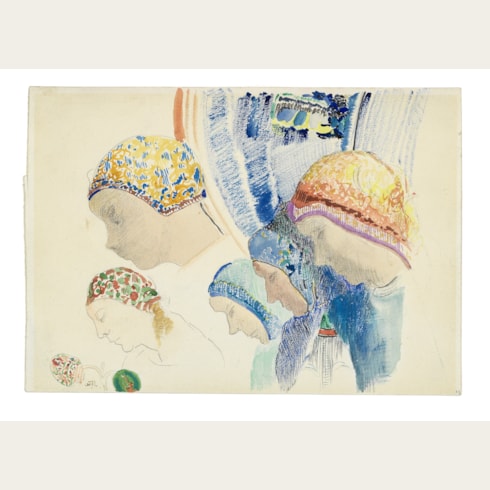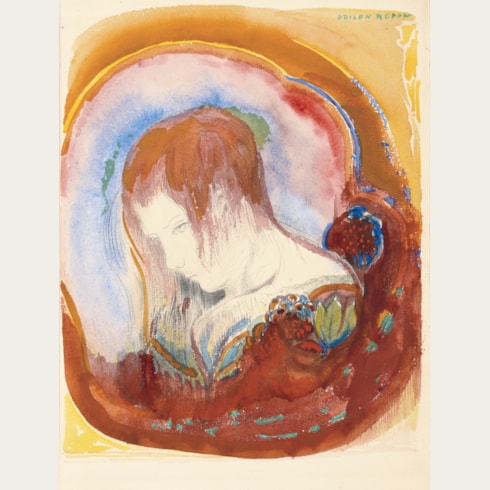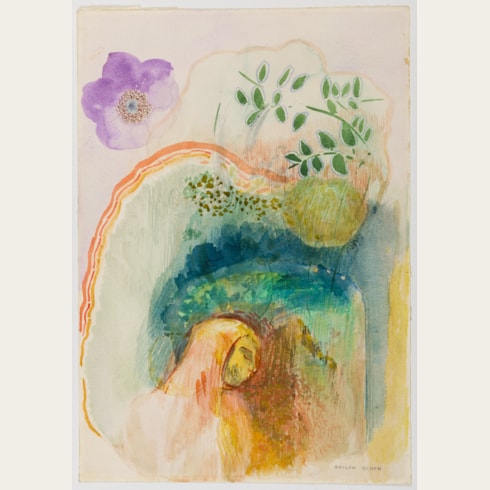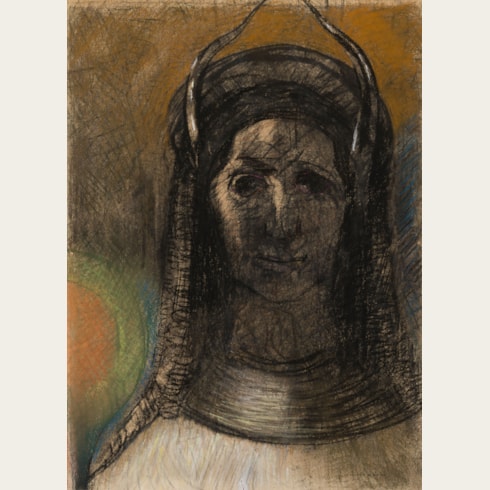Odilon REDON
(Bordeaux 1840 - Paris 1916)
La Barque
Sold
Watercolour.
Signed ODILON REDON at the lower right.
153 x 240 mm. (6 x 9 3/8 in.)
Signed ODILON REDON at the lower right.
153 x 240 mm. (6 x 9 3/8 in.)
Redon treated the theme of boats on a calm sea in several pastels and watercolours. The sea was of great importance for Redon, and boats seem to have had a particularly peaceful, almost comforting association for the artist. As he wrote, ‘Beautiful, peaceful ships, gently lifted by the eternal wave, you float in a friendly harbor. Your long leaning masts and their thin ropes strike the depth of the foggy sky and the breath of the air and the rhythm of the waves cradle the spirit like a gentle harmony…Beautiful, gentle ships; so dear to the sailor, what do you carry in the depth of your skiff? From the bosom of the Ocean, to the immortal source, fishing, treasure, the catch was so great. And the breath of the air, and the rhythm of the waves cradle the spirit like a gentle harmony. Oh sea, oh great friend!’ However, Redon seems also at times to have regarded a sea voyage as a metaphor for a passage through the dangerous realm of the unconscious.
The first recorded owner of this drawing was the sculpture dealer and foundeur Adrien-Aurélien Hébrard (1865-1937), who established a bronze foundry that cast sculptures by Edgar Degas, Rembrandt Bugatti, Jules Dalou and others.
The first recorded owner of this drawing was the sculpture dealer and foundeur Adrien-Aurélien Hébrard (1865-1937), who established a bronze foundry that cast sculptures by Edgar Degas, Rembrandt Bugatti, Jules Dalou and others.
At a very young age, Odilon Redon was sent to live with an old uncle at Peyrelebade, a vineyard and estate surrounded by an abandoned park in a barren area of the Médoc region, northwest of Bordeaux. Here the young boy, who suffered from frail health and epilepsy, was to spend much of his childhood in relative solitude. Indeed, it was not until he was eleven that he was sent to school in Bordeaux, where at fifteen he began to take drawing classes. The most important influence on the young artist was Rodolphe Bresdin, whose studio in Bordeaux he frequented, and who was to prove decisive on his artistic development. It was from Bresdin, for example, that Redon learned the techniques of etching and lithography. Nevertheless, for most of his career Redon worked in something of an artistic vacuum, aware of the work of his contemporaries but generally preferring to follow his own path. His drawings and prints allowed him to express his lifelong penchant for imaginary subject matter, and were dominated by strange and unsettling images of fantastic creatures, disembodied heads and masks, solitary eyes, menacing spiders and other dreamlike forms. For much of the first thirty years of his career Redon worked almost exclusively in black, producing his ‘noirs’ in charcoal and chalk; the drawings he described as ‘mes ombres’, or ‘my shadows’.
It was not until 1881, when he was more than forty years old, that Redon first mounted a small exhibition of his work, to almost complete indifference on the part of critics or the public. The following year, however, a second exhibition of drawings and lithographs brought him to the attention of a number of critics. Redon’s reputation began to grow, and in 1884 he exhibited at the first Salon des Indépendants, which he had helped to organize. Two years later he was invited to show at the eighth and final Impressionist exhibition, and in the same year exhibited with Les XX, a group of avant-garde artists, writers and musicians in Brussels.
Towards the end of the 19th century Redon began to move away from working mainly in charcoal and black chalk in favour of a new emphasis on colour, chiefly using the medium of pastel but also watercolour, oil paint and distemper. Indeed, after about 1900 he seems to have almost completely abandoned working in black and white. Like his noirs, his pastels of floral still lives and portraits were popular with a few collectors, and several were included in exhibitions at Durand-Ruel in 1900, 1903 and 1906, and in subsequent exhibitions of his work in Paris and abroad. Despite this change in direction, however, Redon’s work remained unpopular with the public at large, and it was left to a few enlightened collectors to support the artist in his later years. Nevertheless, an entire room was devoted to Redon at the seminal Armory Show held in New York in 1913, an honour shared by Cezanne, Gauguin, Matisse and Van Gogh.
Provenance
Probably the artist’s studio, Paris, and by descent to his widow, Camille
Adrien-Aurélien Hébrard, Paris
By descent to a private collection, Paris
Anonymous sale, Paris, Hôtel Drouot [Aguttes], 25 June 2007, lot 234.
Literature
Alec Wildenstein, Odilon Redon: Catalogue raisonné de l’oeuvre peint et dessiné. Vol.III: Fleurs et paysages, Paris, 1996, p.340, no.1934 (‘La barque à la figure de proue. Une silhouette de femme, lémure, vouivre ou sirène, à la proue du canot qui emporte dans sa course la Camarde dont le funeste visage est ébauché sur la voile.’).

